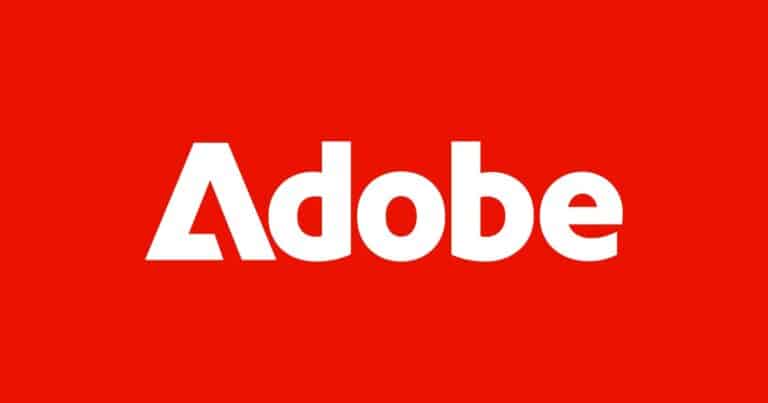A sneak peek overview of the viewpoint+ paper ‘The Human-AI Partnership: Revolutionising Marketing Content Production’
The marketing world is being revolutionised by AI, however the most successful strategies combine technological efficiency with human creativity. Here’s how to strike the right balance.
The New Marketing Dynamic
Let’s face it … AI is transforming marketing at unprecedented speed. What once required massive teams and long timelines can now be accomplished with a fraction of the resources. But there is a catch: the real magic doesn’t happen when AI works alone, but when it collaborates with human marketers in a strategic partnership.
Research from McKinsey & Company shows organisations effectively integrating AI into their work activity can absorb 60 to 70 percent of employees’ time today (McKinsey, 2023). But getting these results isn’t about blindly adopting the latest AI tools. It requires understanding both the innovative capabilities and the real limitations of the technology.
“Getting these results is not about blindly adopting the latest AI tools.”
What AI Does Well (And Where It Falls Short)
Modern AI content tools are powered by large language models (LLMs), a subset of advanced Natural Language Processing (NLP) systems trained on vast datasets. They generate human language with remarkable fluency and relevance. They excel at:
Text generation: Creating blog posts, social content, or ad copy from simple instructions, maintaining consistent narratives throughout.
Content transformation: Adapting existing content for different formats or audiences while maintaining the core message.
Personalisation at scale: Tailoring content elements based on user characteristics, persona segments, and behaviour patterns without manual customisation.
Research augmentation: Analysing trends, search data, and social conversations to suggest relevant content topics and identify audience interests.

However, AI-generated content still faces important limitations:
Generic outputs: Without proper guidance, AI often produces “safe” content that lacks unique character, original thought or ability to engage someone.
Factual accuracy issues: AI can output false information (known as “hallucinations”) or rely on training data that is outdated.
Brand authenticity challenges: AI struggles with conveying empathy or emotion in ways that feel authentic and real, coming across generic or ‘robotic’.
Real-World Marketing Applications
Marketing teams are leveraging AI across multiple content creation areas:
Content Production
- Blog posts and articles: AI creates well-structured drafts that human editors refine with unique insights and brand alignment.
- Social media posts: AI generates platform-appropriate content optimised for engagement, suggesting, post lengths tone of voice, and engagement prompts.
- Email campaigns: AI crafts compelling subject lines and message content tailored to different segments and objectives.
- Ad variations: AI produces multiple testing versions across campaigns, enabling experimentation with different value propositions and calls to action.
Strategic Enhancement

- SEO optimisation: AI suggests improvements beyond basic keyword placement, including semantic relevance and content structure that aligns with modern search algorithms.
- Performance prediction: AI estimates likely content performance based on historical data, helping prioritise the most promising assets.
- Content scheduling: AI determines optimal publishing times across different platforms and audience segments to maximise visibility.
The Tangible Benefits
The integration of AI into content marketing delivers measurable advantages:
Productivity Superpowers
AI allows human talent to focus on high-value work like strategy development, creative direction, and customer insight generation rather than routine content production tasks. This elevates the overall quality and impact of marketing operations, enabling organisations to accomplish more.
Cost Efficiency
Reducing resources required for content creation enables more efficient budget allocation. McKinsey reports productivity of marketing due to generative AI could increase between 5 and 15 percent of total marketing spend (McKinsey, 2023). These savings come from:
- Reduced production resources required
- Streamlined processes with fewer revision and approval cycles
- Faster speed-to-market enabling more agile marketing responses
Personalisation at Scale
AI enables previously unimaginable levels of personalisation:
- Dynamic content delivery tailored to user characteristics and engagement history
- Behavioural-based optimisation that evolves communications with the customer experience
- Omni-channel consistency maintained seamlessly across touchpoints

The Human Element: Why It Remains
Despite AI’s impressive capabilities, human expertise remains essential. “AI is helping leading marketers drive outsized revenue” through balanced partnerships that combine technological capabilities with human strategic oversight (Google, 2025)
A ‘Human in the loop’ provides:
Strategic alignment: Ensuring content supports broader marketing objectives rather than merely producing technically correct but strategically inappropriate materials.
Creative direction: Providing the original thinking that drives truly innovative content and setting guardrails that guide AI toward more unique outputs.
Domain expertise: Intuitively understanding industry contexts, customer pain points, and competitive landscapes provides essential framing that AI cannot derive independently.
Brand guardianship: Maintaining the broad understanding of brand identity and positioning that ensures consistency across channels, campaigns, and content types.
Implementation Blueprint: Getting Started
Assessing Your Readiness
Before starting out or establishing and formal program, evaluate:
- Content needs: Document your current volume, variety, and velocity requirements to determine where AI provides the greatest value.
- Team capabilities: Honestly assess current skills, resources and identify gaps requiring development.
- Quality standards: Define clear guidelines for what constitutes publishable quality across channels.
Selecting the Right Tools
Consider these options:
- General-purpose AI writers: Versatile tools like ChatGPT, Claude, or Gemini are suitable for diverse applications.
- Specialised content platforms: Purpose-built tools for specific content types with features designed for marketing applications, either stand alone or extensions of existing platforms.
- Enterprise AI solutions: Comprehensive platforms with integration and governance features providing end-to-end capabilities.
The optimal approach often combines multiple tools based on content type, channel requirements, and strategic importance.
Creating Effective Workflows
Successful implementation requires:
- Clear processes: Create systematic workflows for AI generation, human in the loop review and refinement, with defined roles and responsibilities.
- Team training: Develop skills in prompt crafting and output evaluation through formal training programs.
- Governance frameworks: Establish guidelines for appropriate AI use including content approval processes, acceptable use cases, and IP security.
- Performance measurement: Define metrics to assess AI’s contribution to marketing goals, measuring both efficiency and effectiveness indicators.

Looking Ahead: The Future of AI in Marketing
Several developments will shape the evolving landscape:
- Multimodal AI: Integration of text, image, audio, and video generation capabilities enabling cohesive cross-format content creation.
- Collaborative interfaces: Tools and Agents designed specifically for human-AI creative partnerships with capabilities optimised for tailored iteration.
- Real-time optimisation: Continuous monitoring based on performance data creating adaptive, responsive content experiences.
As Google research highlights, “AI is helping leading marketers drive outsized revenue” through balanced partnerships that combine technological capabilities with human strategic oversight (Google, 2025).
The Balanced Approach: Your Competitive Advantage
The most successful marketing organisations recognise that AI and human in the loop expertise are complementary forces. By combining AI’s efficiency and scalability with human creativity, strategic thinking, and ethical judgment, marketing teams can create content that’s not only produced more efficiently but also more effective at engaging audiences and driving business outcomes.
The future belongs not to organisations that simply adopt AI tools, but to those that develop the organisational capabilities to leverage these tools within thoughtfully designed human-AI partnerships.
WATCH THIS SPACE: Want to explore deeper AI-powered marketing content production? Download the comprehensive viewpoint+ paper: “The Human-AI Partnership: Revolutionising Marketing Content Production” .
Sources:
1. McKinsey – The Economic Potential of Generative AI (2023) https://www.mckinsey.com/capabilities/mckinsey-digital/our-insights/the-economic-potential-of-generative-ai-the-next-productivity-frontier
2. PwC – 2025 AI Predictions (2024) https://www.pwc.com/us/en/tech-effect/ai-analytics/ai-predictions.html
3. McKinsey – How generative AI can boost consumer marketing (2023) https://www.mckinsey.com/capabilities/growth-marketing-and-sales/our-insights/how-generative-ai-can-boost-consumer-marketing
4. Google – AI is helping leading marketers drive outsized revenue (2025) https://business.google.com/us/think/ai-excellence/ai-pathways-to-marketing-excellence/
5. Content Marketing Institute – Technology Content Marketing Benchmarks, Budgets, and Trends: Outlook for 2025(2024) https://contentmarketinginstitute.com/technology-research/content-marketing-technology-research






